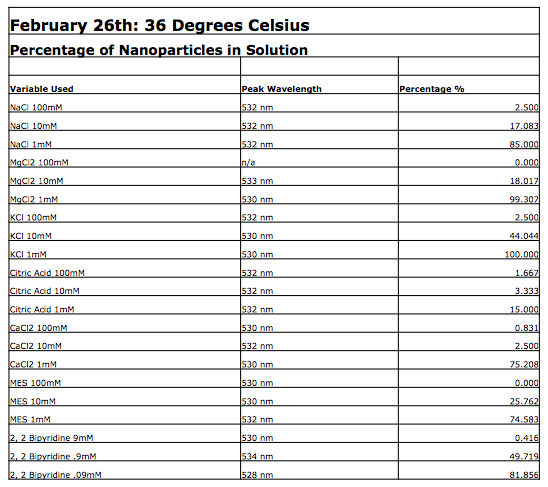User:Alexander Cvitan/Notebook/Experimental Biological Chemistry Lab/2014/02/26: Difference between revisions
From OpenWetWare
| Line 31: | Line 31: | ||
[[Image:Screen_shot_2014-02-26_at_5.17.36_PM.png]] | [[Image:Screen_shot_2014-02-26_at_5.17.36_PM.png]] | ||
[[Image:Screen_shot_2014-02-26_at_5.17.23_PM.png]] | [[Image:Screen_shot_2014-02-26_at_5.17.23_PM.png]] | ||
*Based off of all UV-Vis data: The ABS for the controls were corrected for the dilution factor present and the percent AuNP's in solution was calculated. | |||
[[Image:Screen_Shot_2014-03-26_at_2.53.43_PM.png]] | [[Image:Screen_Shot_2014-03-26_at_2.53.43_PM.png]] | ||
Revision as of 11:55, 26 March 2014
 Biomaterials Design Lab: Spring 2014 Biomaterials Design Lab: Spring 2014
|
<html><img src="/images/9/94/Report.png" border="0" /></html> Main project page <html><img src="/images/c/c3/Resultset_previous.png" border="0" /></html>Previous entry<html> </html>Next entry<html><img src="/images/5/5c/Resultset_next.png" border="0" /></html> |
Objective
ProcedureSynthesizing Lysozyme-AuNP and BSA-AuNP
Figures
UV-Vis of Heated Samples and Variables (36°C)
Notes
| |










